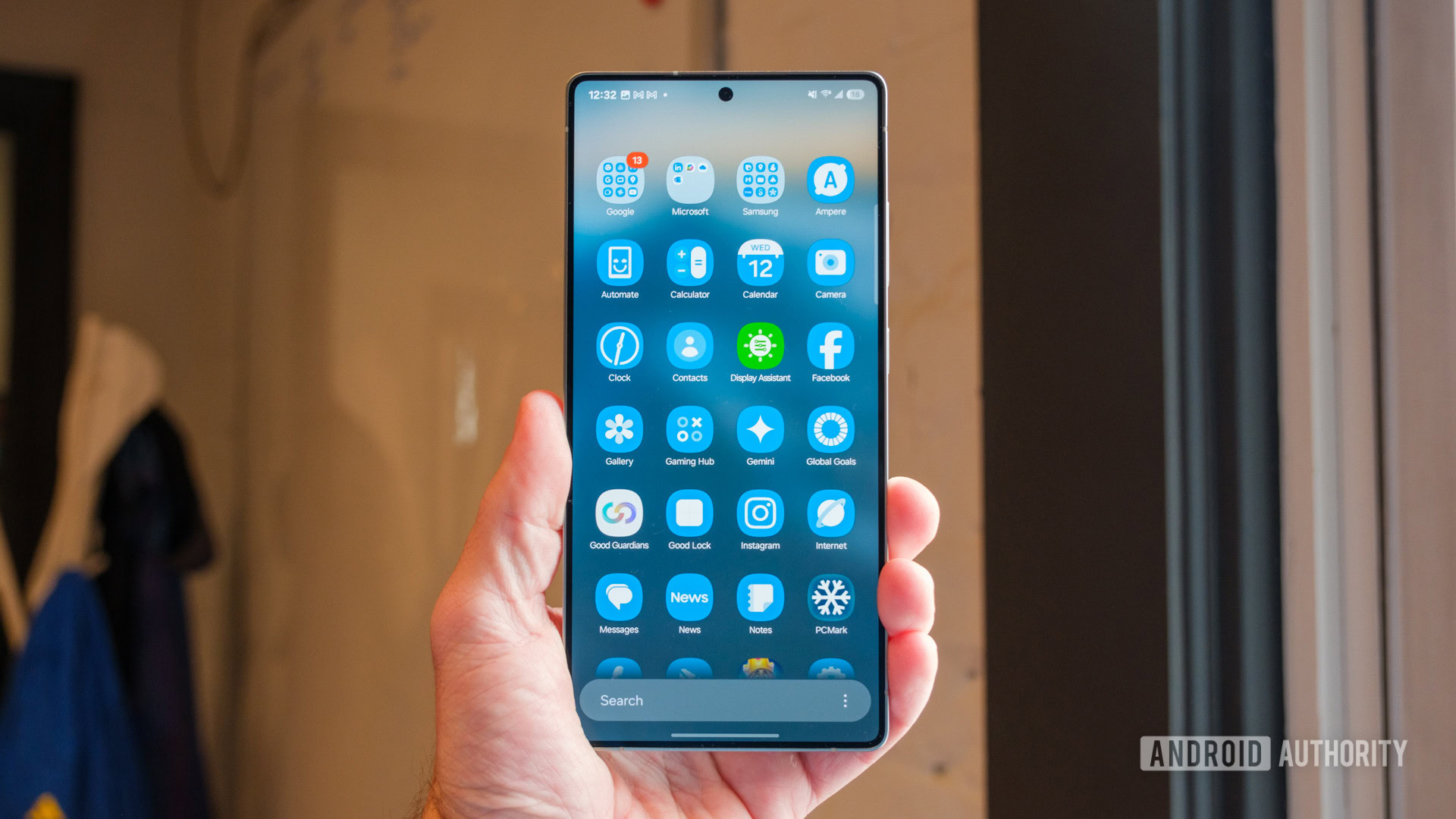Affiliate links on Android Authority may earn us a commission. Learn more.
Samsung Galaxy Note 5 vs LG V10
Published onJanuary 12, 2016
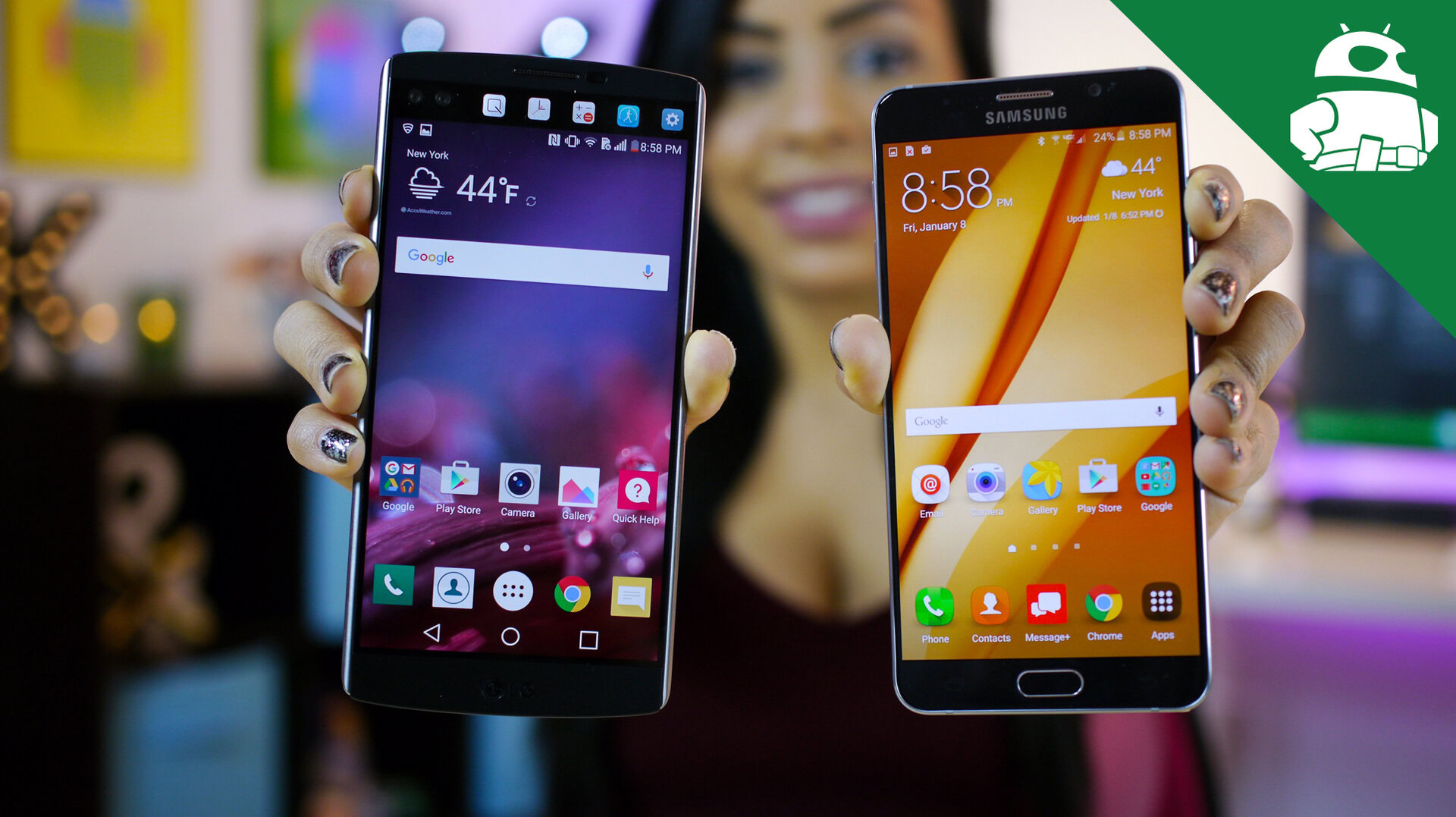
Last year, LG announced its brand new V series of smartphones in their latest attempt to capture the premium smartphone market. The first of the series was dubbed the LG V10, and the new flagship gave LG fans a great alternative to the LG G4, complete with a more durable design and it also introduced special features like a fingerprint scanner. The LG V10 has found a modest level of success, but it’s certainly not without competition in the big-screen/premium space.
The most obvious competitor is the Samsung Galaxy Note 5, which saw a major upgrade in 2015, giving users a more premium design and build quality, though these changes weren’t without some sacrifice. Samsung removed several staple features as a result of the new design, while improving other core features, such as the S-Pen.
Both smartphones are some of the best currently available, but which is the best choice for you? We find out, in this comprehensive look at the Samsung Galaxy Note 5 vs LG V10!
Design
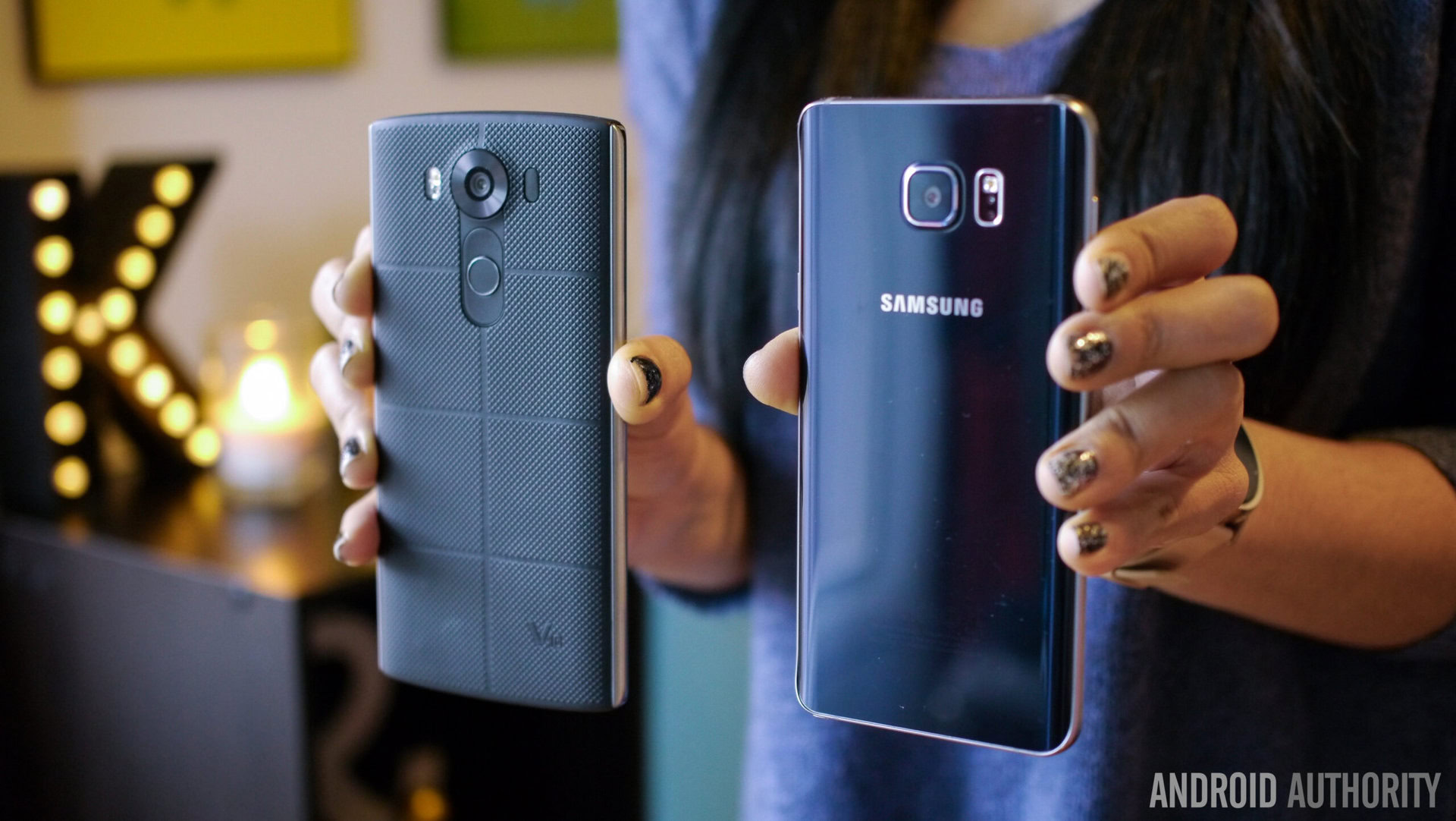
With both smartphones featuring very contrasting designs and build qualities, the choice between the two will be made for a lot of consumers right off the bat based on this aspect. While the Samsung flagship features a dramatic departure from its predecessors, with a larger focus on looks and build quality, LG continues to prioritize functionality, even though the V10 isn’t particularly unattractive either.
As mentioned, the Galaxy Note 5 is very different from previous generations of the series, and like the Galaxy S6, now features a premium metal and glass unibody construction. This is a beautifully-designed smartphone with a premium build quality that matches its high-end nature, and is definitely one of the biggest selling points of this device. However, the new design did result in a couple of previously staple features, namely expandable storage and a removable battery, going by the wayside.
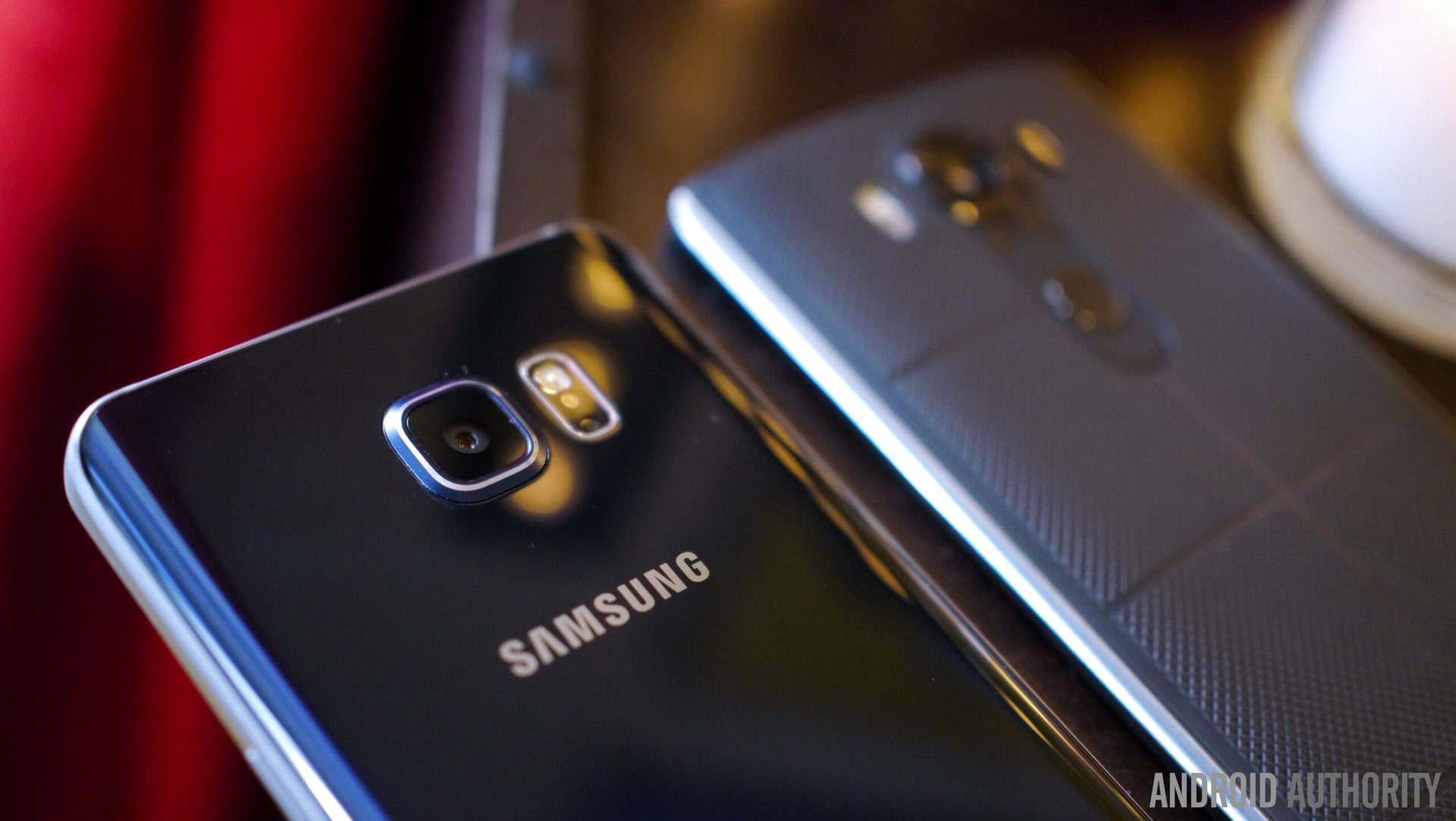
The glass backing has a curve to it along the sides that lets this large smartphone nestle nicely in the palm of your hand, and with its ultra-thin bezels and small top and bottom areas, the handling experience available with the Galaxy Note 5 is certainly more manageable than what is expected from a device featuring a 5.7-inch display. The glass does make the device quite slippery though, and it is also a fingerprint magnet.
On the other hand, the LG V10 sees a design and build quality based on functionality. The device features a metal frame and a backing made of what LG calls “DuraSkin,” and the material not only looks and feels nice, but allows for a lot of grip, which means you don’t have to worry about the phone slipping out of your hands. The back cover of the V10 is also removable, giving you access to the user replaceable battery and microSD card slot, making LG one of the few OEMs to still offer these features.
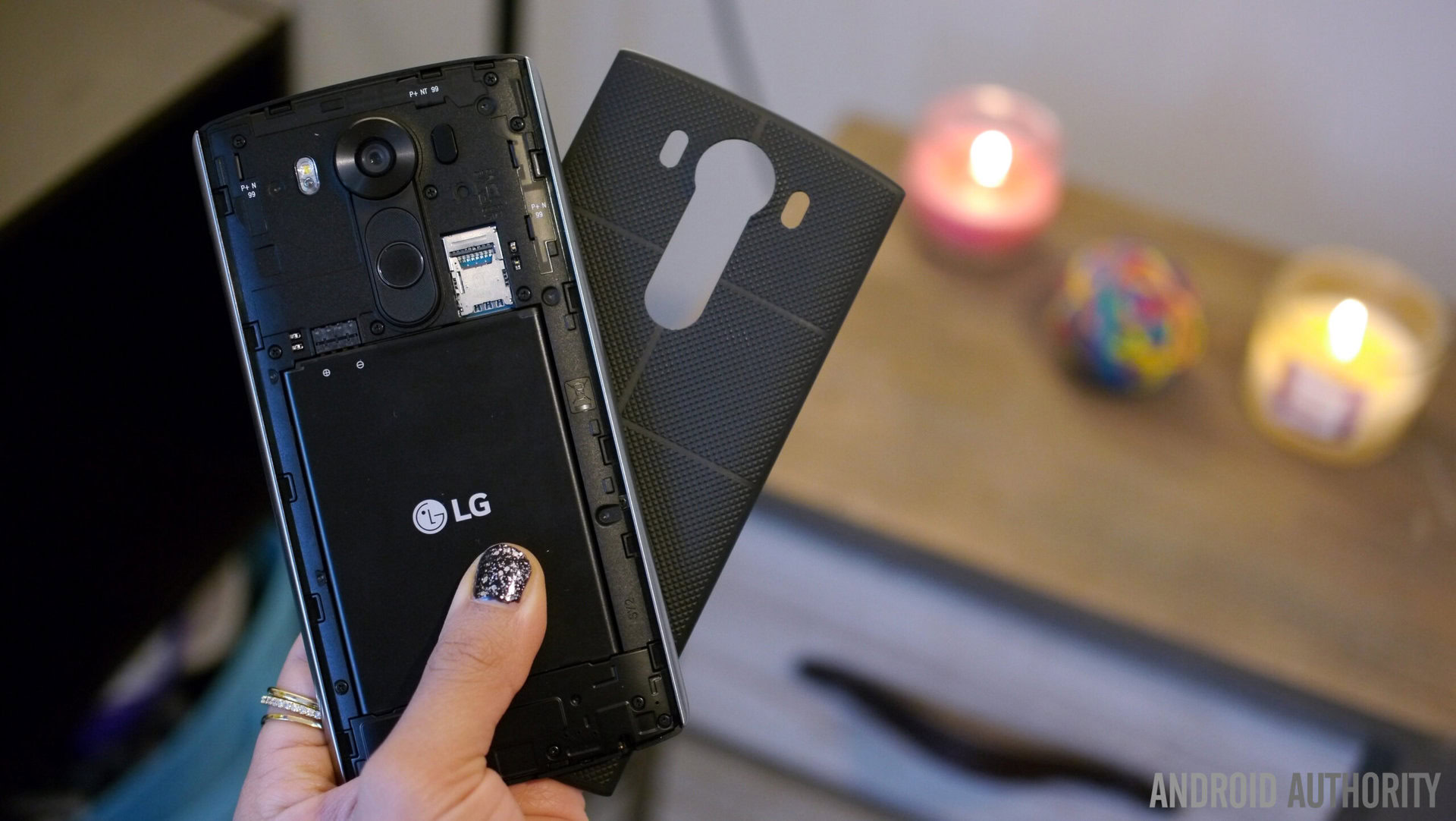
With its removable back cover and secondary screen above the main display, the LG V10 is taller, thicker, and heavier than the Samsung Galaxy Note 5, but LG has still managed to keep the device as compact as possible, courtesy of its ultra-thin bezels. The handling experience of the Galaxy Note 5 may be better in terms of size, but the LG flagship sees its advantages when it comes to grip. Further, the V10 is MIL-STD-810G certified for shock resistance, and is definitely the more durable of the two smartphones.
Design is one aspect that is entirely dependent on personal preference, but we have to admit that the Galaxy Note 5 is the sleeker and more elegant of the two. That said, the industrial design and build quality of the LG V10 does make for a far more durable smartphone, and ultimately it is your choice as to what aspect is more important to you.
Display
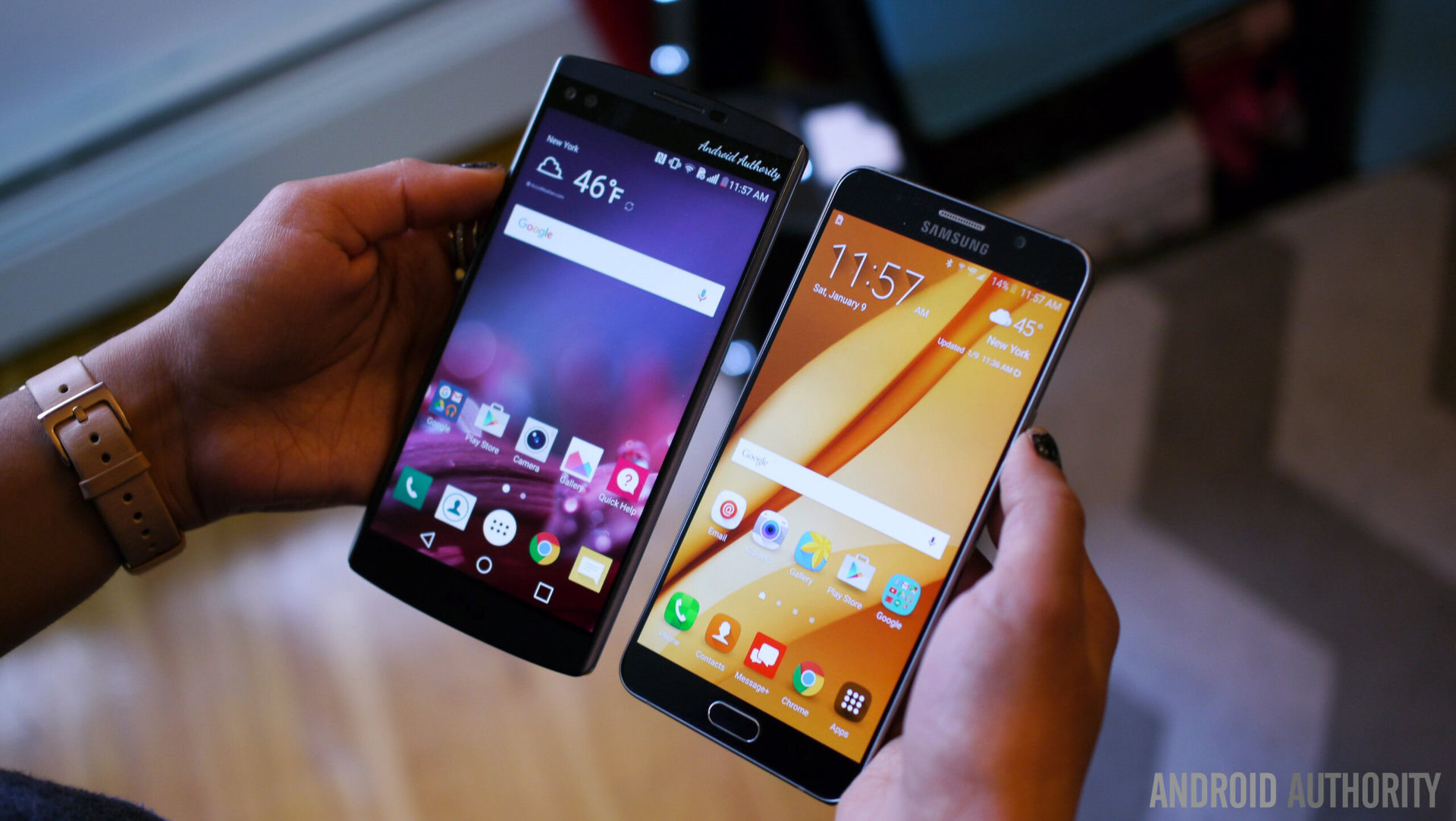
Both smartphones feature 5.7-inch displays with a Quad HD resolution, resulting in similar pixel densities. That said, these displays have their differences because of the differing underlying technologies, with Samsung continuing to bank on Super AMOLED, while the V10 features a IPS LCD panel.
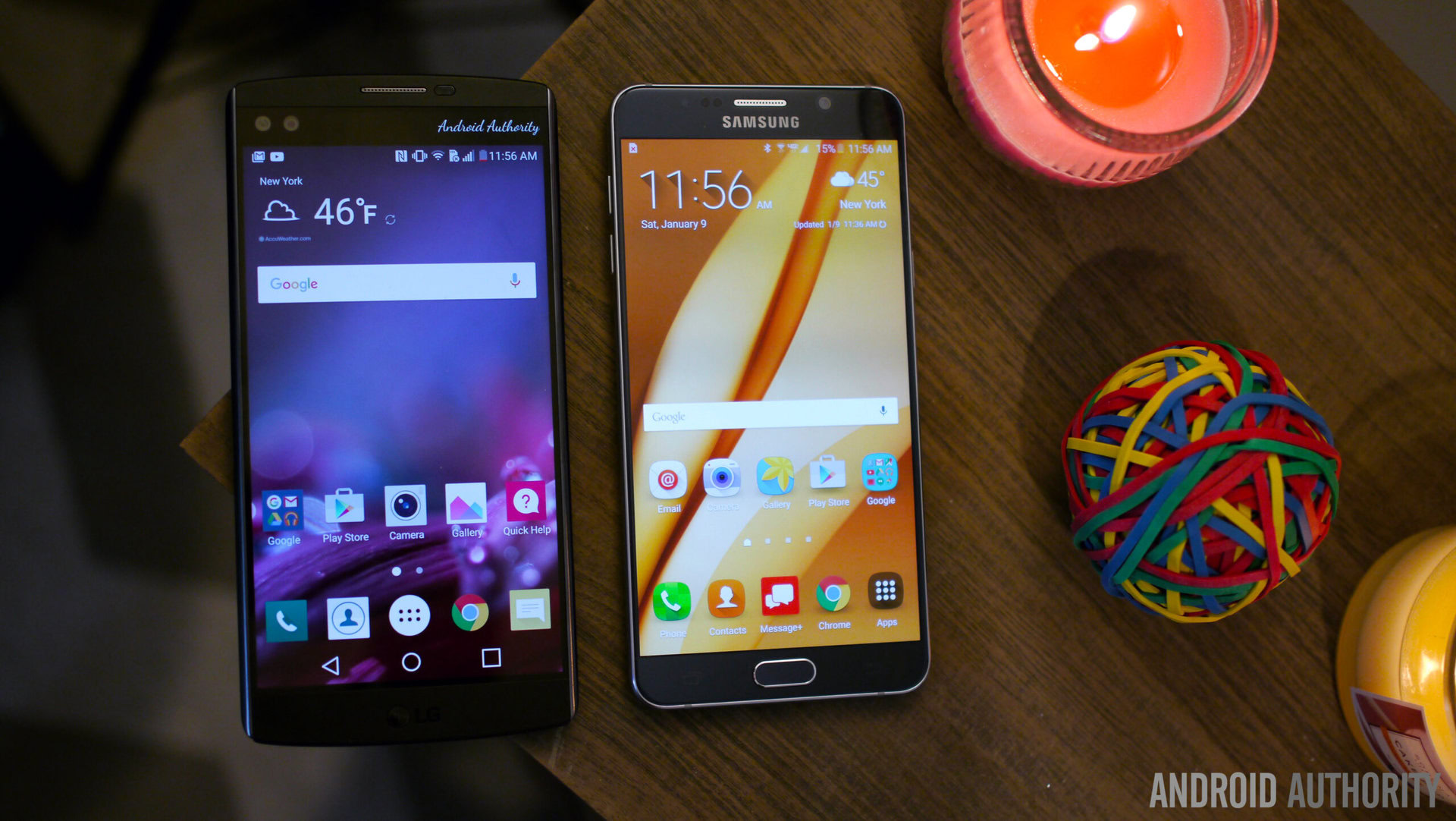
As is expected from Super AMOLED, the display of the Galaxy Note 5 features deep blacks, vibrant, vivid, and saturated colors, and plenty of brightness for comfortable viewing in broad daylight. However, you do have the option to tone down the saturation as well, depending on your personal taste. The display of the LG V10 isn’t bad either though, and really outperforms most other LCD panels out there. However, when pitting the two displays against each other, the more saturated look of the Galaxy Note 5 may be what most users prefer.
Both displays make for a very pleasant viewing experience, but it is worth noting that the Galaxy Note 5 takes better advantage of it’s screen size by decreasing the DPI to 560, to fit more onto the screen. You will notice that icons and words appear larger on the V10 thanks to it’s DPI set at 640, which is a little unfortunate, as things appear to unnecessarily take up much more room on the screen.
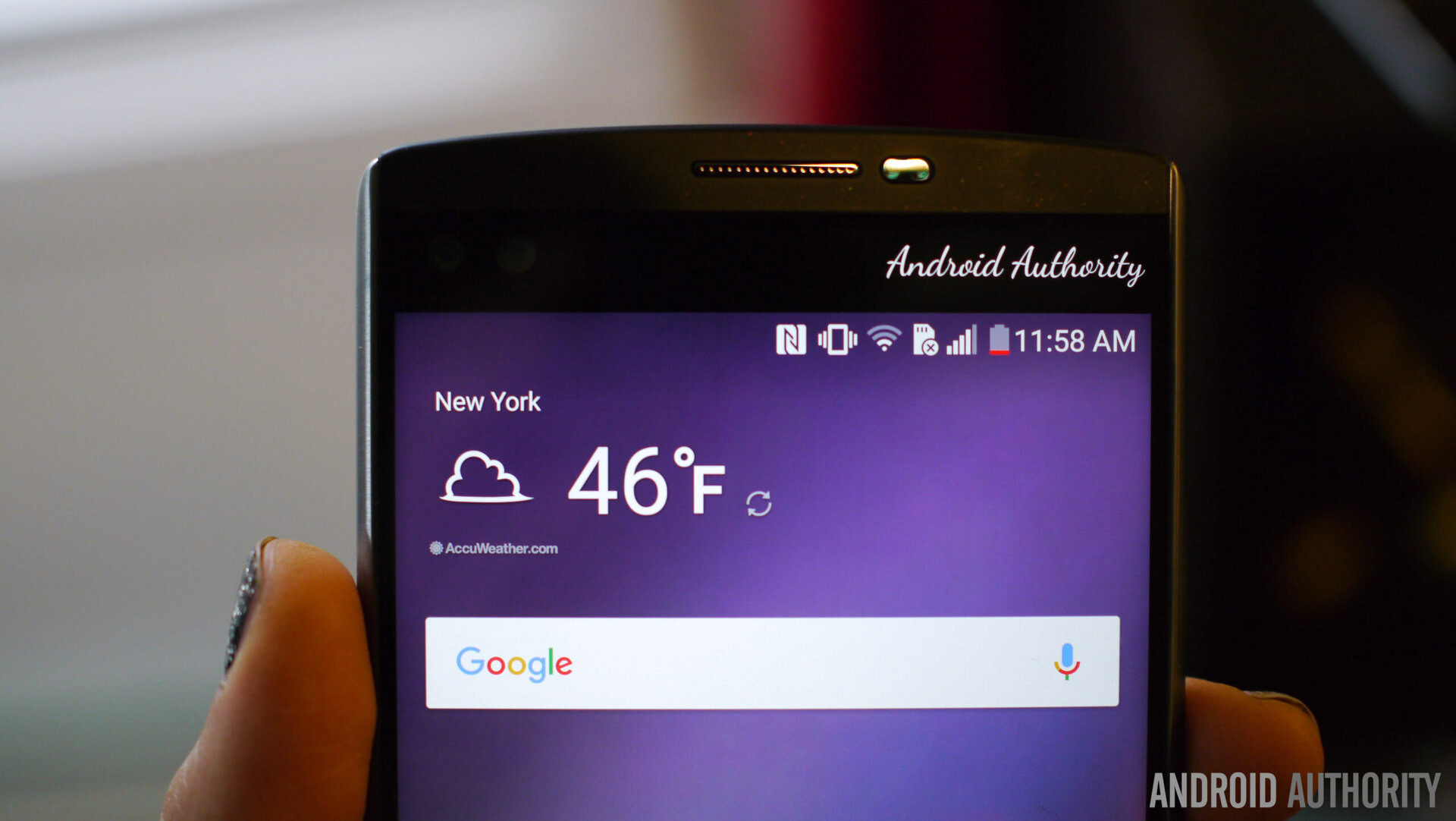
Of course, the big news on the display front is the secondary screen that the LG V10 packs, found on top of the primary display, and takes up about 70% of the width of the main screen, with the dual front-facing cameras occupying the rest of the space. This secondary display is a great way for showing notifications without taking away from the main display, and you can also set up app shortcuts for quick and easy access to them. This display also stays on throughout, which means you don’t have to keep turning on the main screen to check your notifications.
Once you get into the habit of using this secondary screen, it can certainly help improve your workflow. That said, while it is an interesting idea, its functionality may not be enough to justify the extra space that it takes up.
Performance
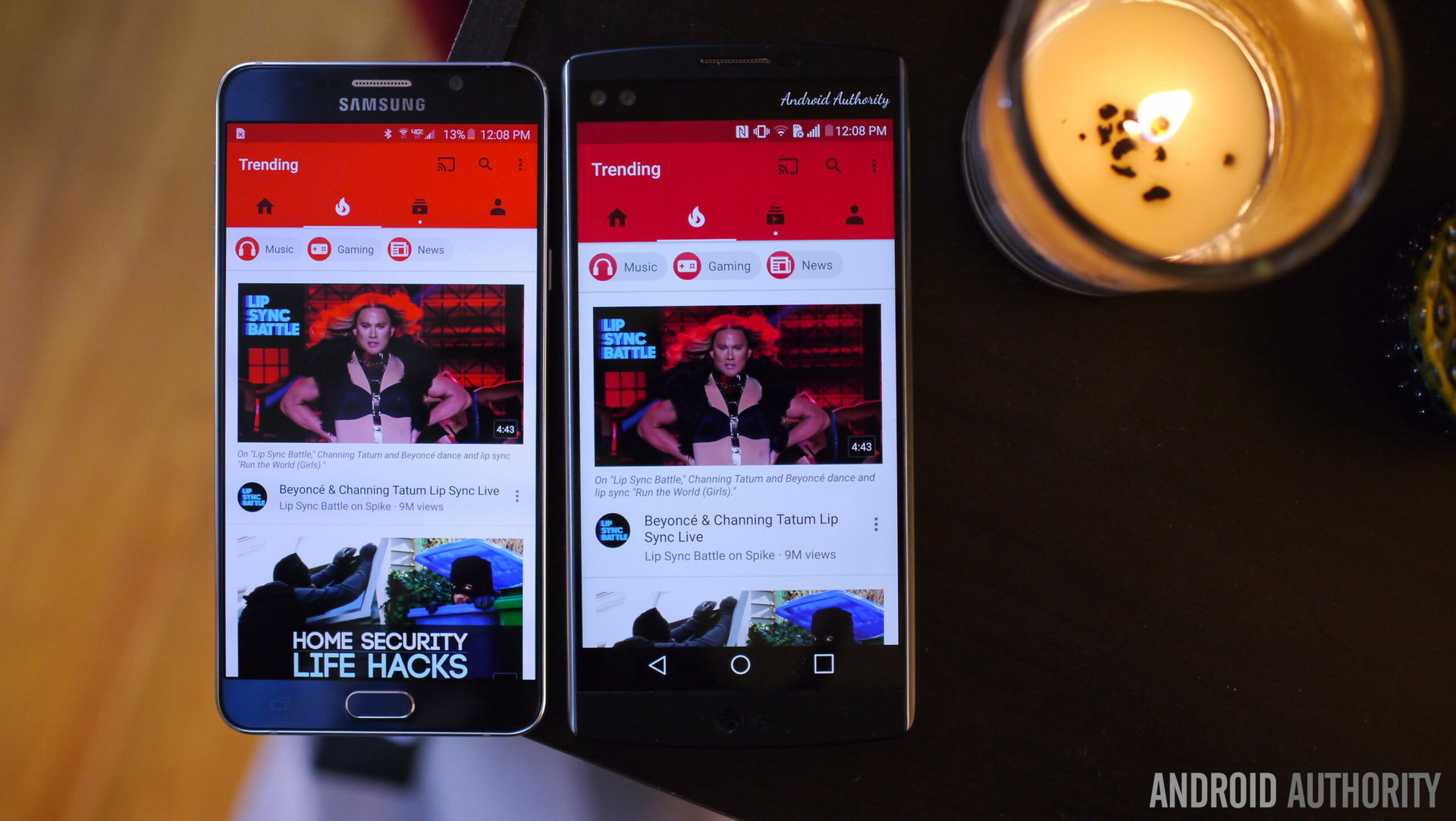
Under the hood, the LG V10 comes with an octa-core Qualcomm Snapdragon 808 processor, clocked at 1.82 GHz, and backed by the Adreno 418 GPU and 4 gigabytes of RAM. In contrast, the Samsung Galaxy Note 5 comes with an in-house octa-core Exynos 7420 processor, clocked at 2.1 GHz, and backed by the Mali-T760MP8 GPU, though it also has 4 GB of RAM.
Given the various multi-tasking capabilities both smartphones feature, the overall experience with both is as smooth and snappy as expected, even though the LG V10 does seem to do a better job with RAM management when compared to the Galaxy Note 5. However, the Galaxy Note 5 does provide better performance in terms of load times and frame rates as far as gaming is concerned, but the LG V10 isn’t that far behind.

Hardware
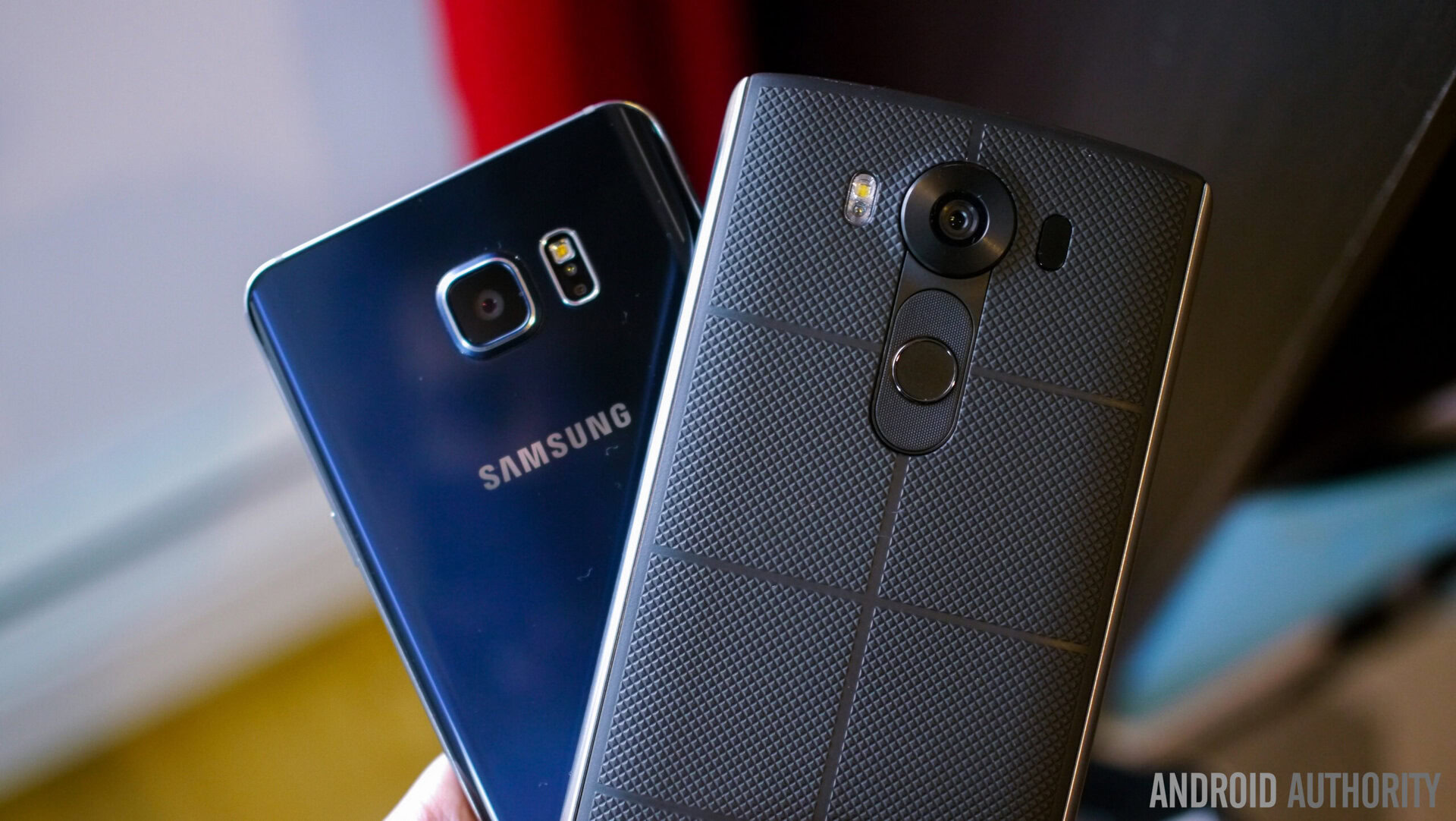
32 GB and 64 GB are the available storage options with the Samsung Galaxy Note 5, but with the lack of expandable storage, users will have to depend on the higher storage iteration to cover their needs. On the other hand, 64 GB is the only option available with the LG V10, and while that should be more than enough for most, you do also get expandable storage via microSD card by up to 200 GB.
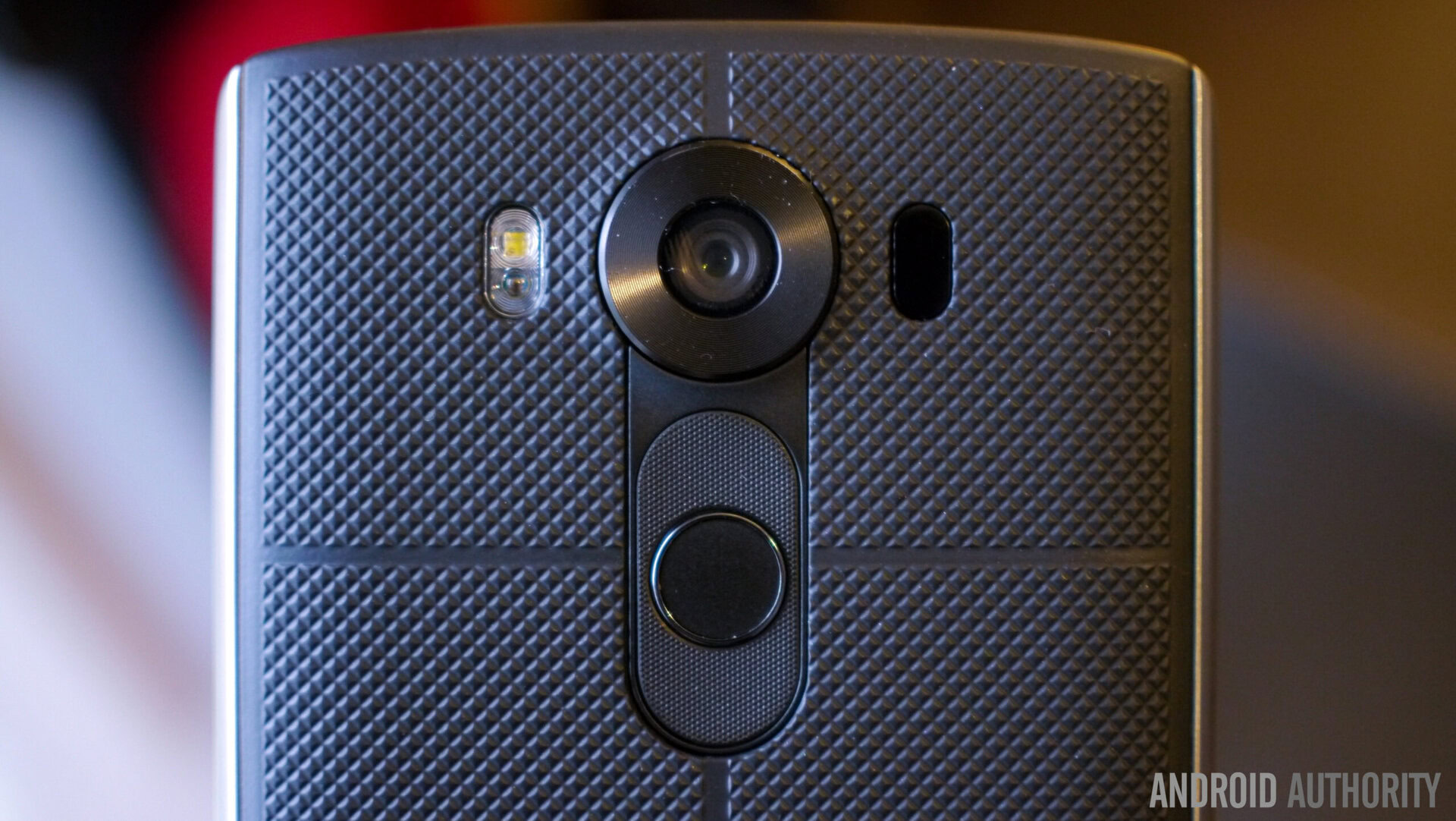
Both smartphones feature fingerprint scanners in the touch-type implementation, integrated into the home button up front in the case of the Galaxy Note 5, and in the power button on the back of the LG V10. The different placements have their advantages and disadvantages, and while the Galaxy Note 5 can be unlocked when the device is on a table, the scanner is awkward to reach when holding the phone, in which instance, the position of the reader on the LG V10 is ideal. Both are as fast and reliable as expected, and work equally well.
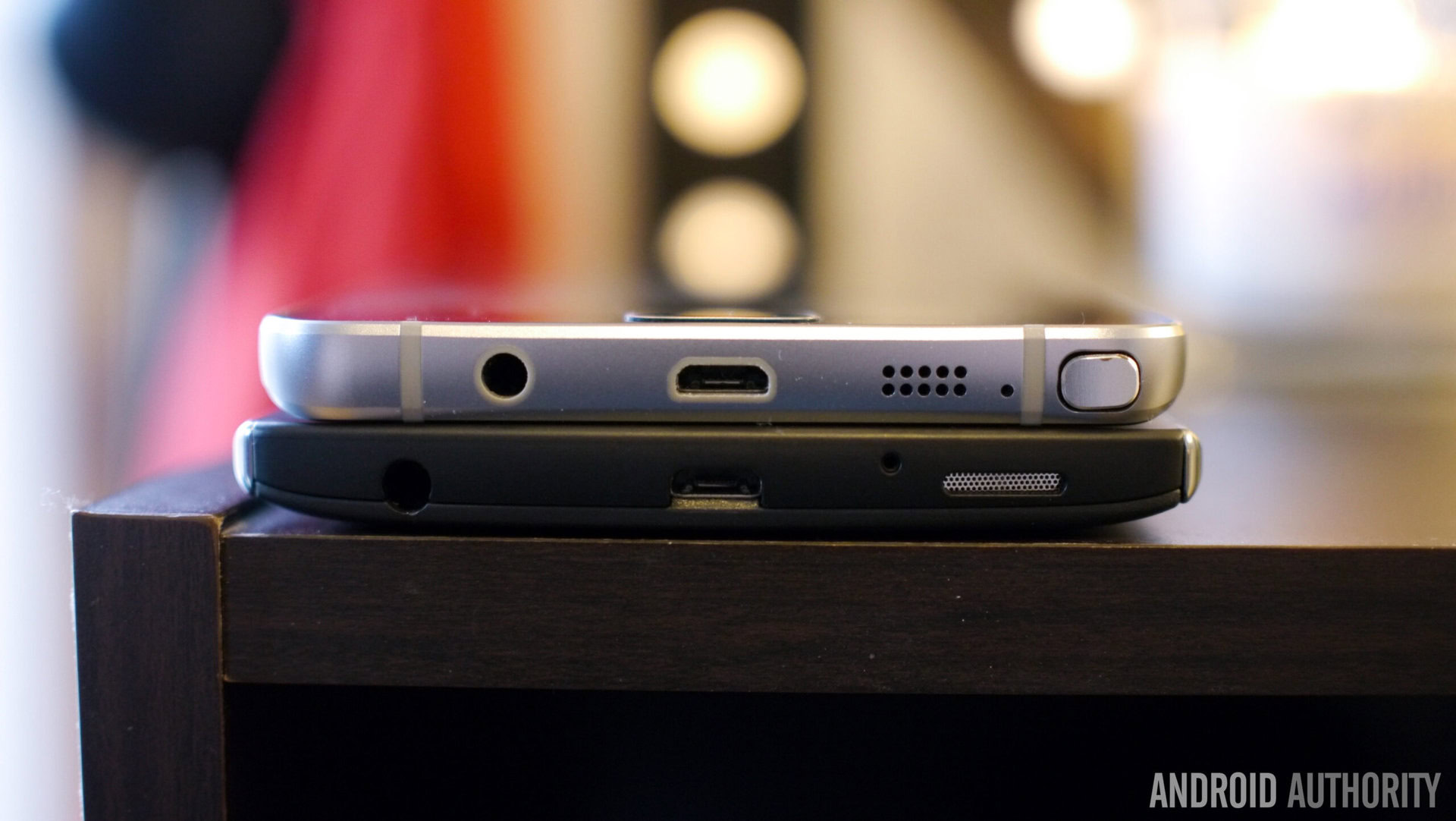
Both phones comes with single bottom-mounted speakers, and while neither offer fantastic sound quality, the speaker of the LG V10 does get louder, and offers better highs without sounding as tinny as the speaker of the Galaxy Note 5, making for a clearer and brighter sound. When plugging in headphones, the LG V10 is the clear winner, with its support for 32-bit Hi-Fi DAC audio from ESS technology.
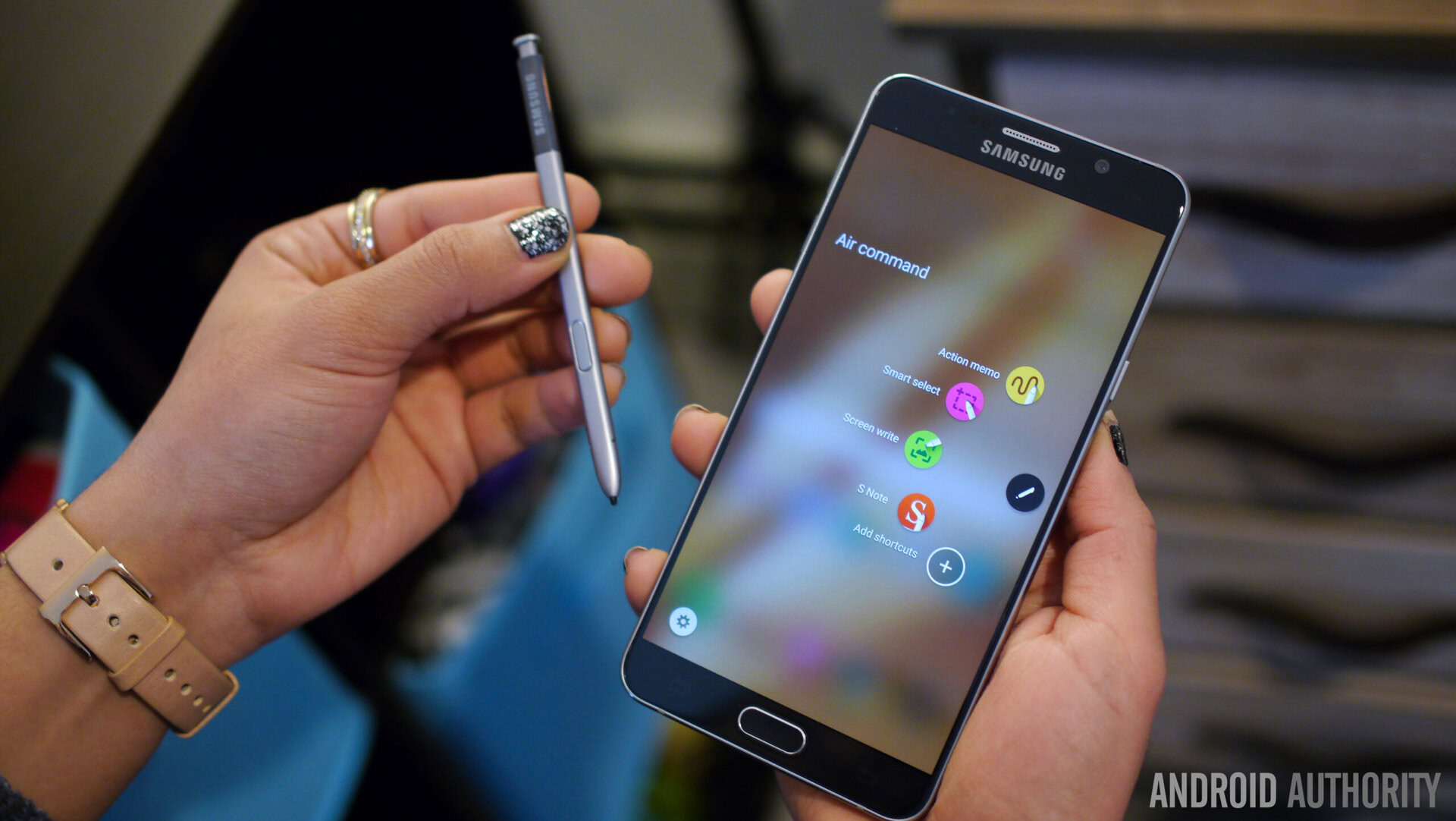
Of course, the Samsung Galaxy Note 5 does pack some extras in terms of hardware, including the heart rate monitor on the back, and the S-Pen, nestled neatly away into the bottom the right corner. The re-designed S-Pen comes with even more software capabilities this time around, such as Screen-off memo, which is an incredibly useful feature, allowing for a quick and easy way to jot down something on the fly. Other features found when the screen is on include Smart Select, that lets cut out and share any portion of the screen, and Screen Write, which takes screenshots of the current page entirely, for editing, which means scrollable pages on websites are pieced together automatically, resulting in one long image or note.
Both smartphones come with 3,000 mAh batteries, but the Galaxy Note 5 does seem to provide slightly better battery life. It is relatively easy to get a full day of use out of both devices, with the Galaxy Note 5 allowing for up to 4.5 hours of screen-on time, with the LG V10 falling short at around 4 hours. Both smartphones feature fast charging capabilities, so you will be up and running quickly if you are worried about running out of battery. While the Galaxy Note 5 also comes with fast wireless charging, the LG V10 sees its advantage in the fact that the battery is removable, giving users the option to carry around a spare.
Camera
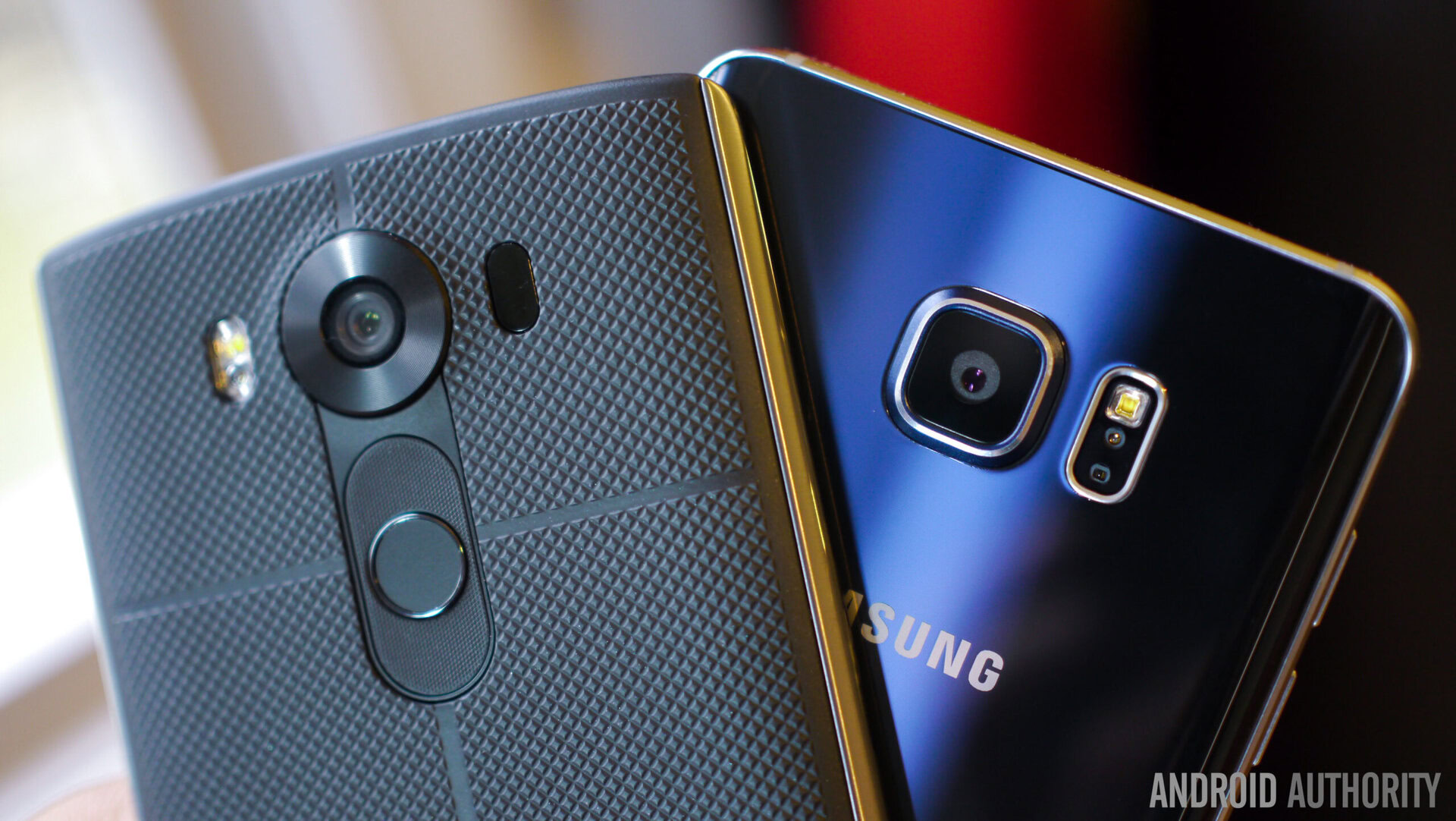
Both smartphones retain the cameras from their early 2015 flagship counterparts, with the Galaxy Note 5 coming with a 16 MP rear shooter with a f/1.9 aperture and OIS, while the LG V10 also features a 16 MP rear camera, with a f/1.8 aperture and OIS, along with the additional benefit of a laser-guided auto focus system, that does allow for the V10 camera to focus faster.
Both cameras perform exceptionally well when it comes to outdoor shots, with little difference between the two. The Galaxy Note 5 adds a bit more contrast and color to the images, which does come down to personal preference, but that extra boost from the post processing is quite appealing. However, this does mean that you will lose a lot of information in the darker areas of the photos. Colors are more towards the warmer side as well, while the V10 is a little cooler with less saturated colors, often capturing a more accurate representation of the scene. That doesn’t mean this camera is necessarily better or worse than the Galaxy Note 5, and it all depends on how you’re going to be using these photos.
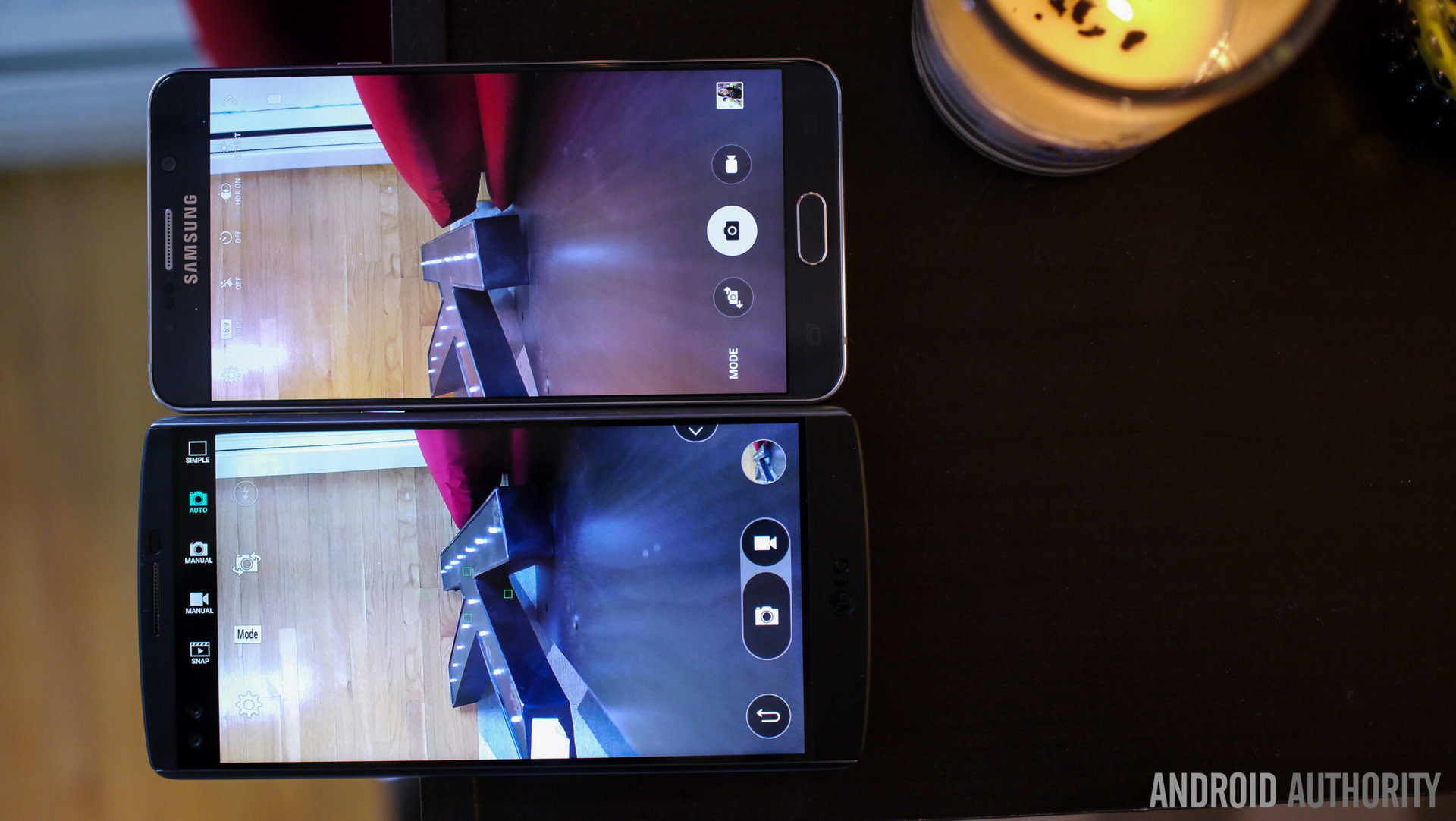
If you want to quickly snap a beautiful photo without having to tinker with any settings, you’re going to love the vibrant colors, higher contrast, and sharper images on the Galaxy Note 5. However, if you want a more accurate and realistic photo with lots of room for editing, the V10 is going to be your best bet. Both do have manual controls as well, although the V10 has some more flexibility especially when it comes to focus. In low light conditions, the LG V10 is the clear winner, with V10 creating a crisper image with more detail, compared to the almost airbrushed look shots in low light have with the Galaxy Note 5.
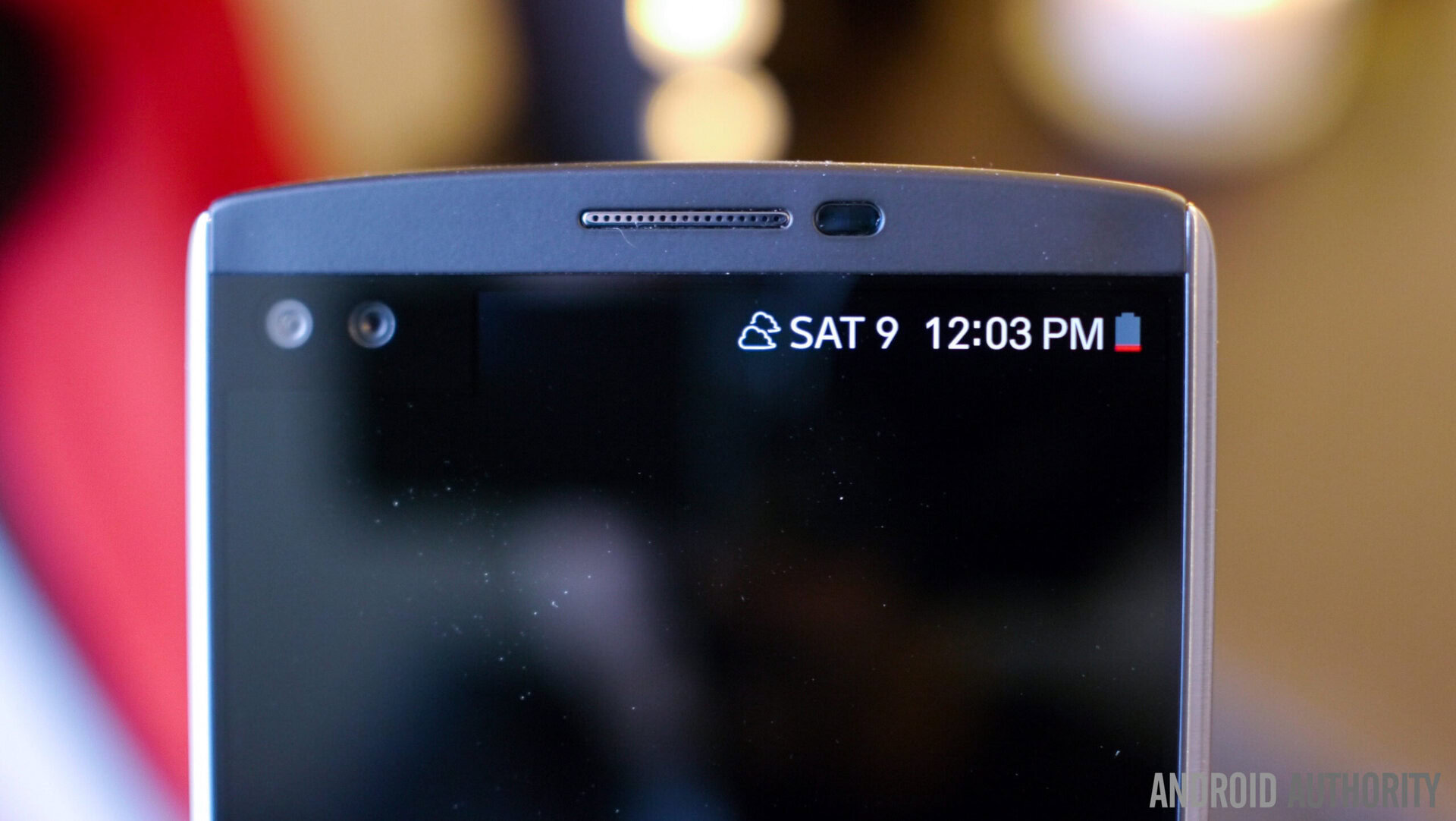
In video mode, both cameras take some decent shots, even in 4K, and with OIS, your videos will be a lot smoother than usual, with the Note 5 having a bit more shake. The V10 decides it wants to focus more often than the Galaxy Note 5 though, but when it does, it does it a lot faster with its laser autofocus. However, the V10’s video recording capabilities is in a totally different league than the Note 5 with it’s full manual controls. It’s very similar to the controls in manual photo mode, except with a few new additions, including a stereo sound level to view audio and an audio controller where you can tell the V10 if the audio is coming from behind or in front of the phone, to help with some noise cancellation. We can also control how loud the sound is recorded and there is also a Wind Noise Filter.
Samsung Galaxy Note 5 camera samples
The front facing cameras on these devices are great in their own ways. The Galaxy Note 5 has a single wide angle lens that helps with getting everything in the shot, while the V10 has two selfie cams, a wide angled lens, and another that is able to get a closer shot. However, most users would be fine with just one wide angled front facing camera on the V10, while never really using the more standard lens.
LG V10 camera samples
Both cameras are a close match but with the V10 does offer better video quality, video features, a better front facing camera, and more realistic photos that photographers will love. However, the Galaxy Note 5 isn’t far behind at all, and overall, users will be happy with the camera experience regardless of which phone they pick.
Software
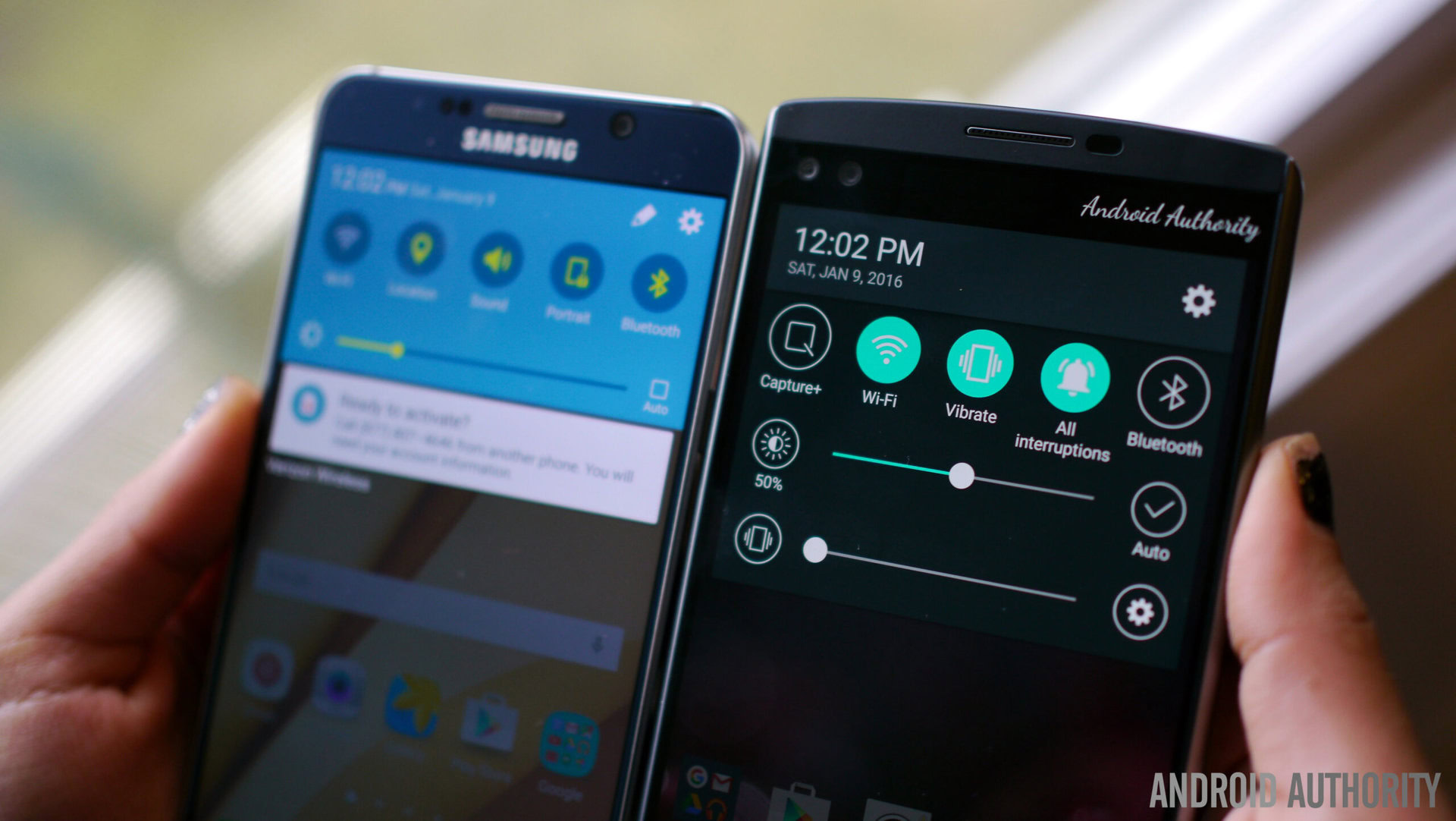
Both the LG V10 and Galaxy Note 5 are running Android 5.1.1 Lollipop, with the latest versions of G UI and TouchWiz respectively. Visually, they appear to be very similar with simplified notification pull downs and quick shortcuts that you can customize. Their settings menus are are grouped into four sections depending on which carrier you have. Some people may not be too fond of how these skins look, and I do prefer the more neutral colors of LG’s skin over Samsung’s bright blue and green colors that can appear a little out of place sometimes.
Galaxy Note 5 screenshots
LG V10 screenshots
The main concern here is how each phone holds up when doing everyday tasks and some more heavy usage. Both are capable of dual-window support which is great, given the big 5.7-inch displays found here. Both phones deliver unique and for the most part, good software experiences, but I’ll lean a little more towards the V10, as it seemed the most reliable in my weeks of testing.
Specs comparison
| Samsung Galaxy Note 5 | LG V10 | |
|---|---|---|
Display | Samsung Galaxy Note 5 5.7-inch Super AMOLED display Quad HD resolution, 518 ppi | LG V10 Main: 5.7-inch IPS Quantum Display with 2560 x 1440 resolution, 515 ppi Secondary: 2.1-inch IPS Quantum Display with 160 x 1040 resolution, 515 ppi |
Processor | Samsung Galaxy Note 5 2.1 GHz octa-core Exynos 7420 Mali-T760MP8 GPU | LG V10 1.82 GHz hexa-core Qualcomm Snapdragon 808 Adreno 418 GPU |
RAM | Samsung Galaxy Note 5 4 GB | LG V10 4 GB |
Storage | Samsung Galaxy Note 5 32/64 GB not expandable | LG V10 64 GB expandable via microSD card by up to 200 GB |
Camera | Samsung Galaxy Note 5 16 MP rear camera with OIS 5 MP front-facing camera | LG V10 16 MP rear camera with OIS 5 MP dual front-facing cameras |
Battery | Samsung Galaxy Note 5 3,000 mAh | LG V10 3,000 mAh |
Software | Samsung Galaxy Note 5 Android 5.1.1 Lollipop | LG V10 Android 5.1.1 Lollipop |
Dimensions | Samsung Galaxy Note 5 153.2 x 76.1 x 7.6 mm 171 grams | LG V10 159.6 x 79.3 x 8.6 mm 192 grams |
Gallery
Final thoughts

So there you have it for this in-depth look at the Samsung Galaxy Note 5 vs LG V10! As mentioned, for most users, the choice between the two will be easy, based primarily on design and build quality. The Galaxy Note 5 features the sleeker and more elegant design, the arguably better display, and those looking for productivity will love the S-Pen and all its capabilities. On the flip side, if durability is a concern, the LG V10 is the device for you, and features like expandable storage and a removable battery are big positives as well.
